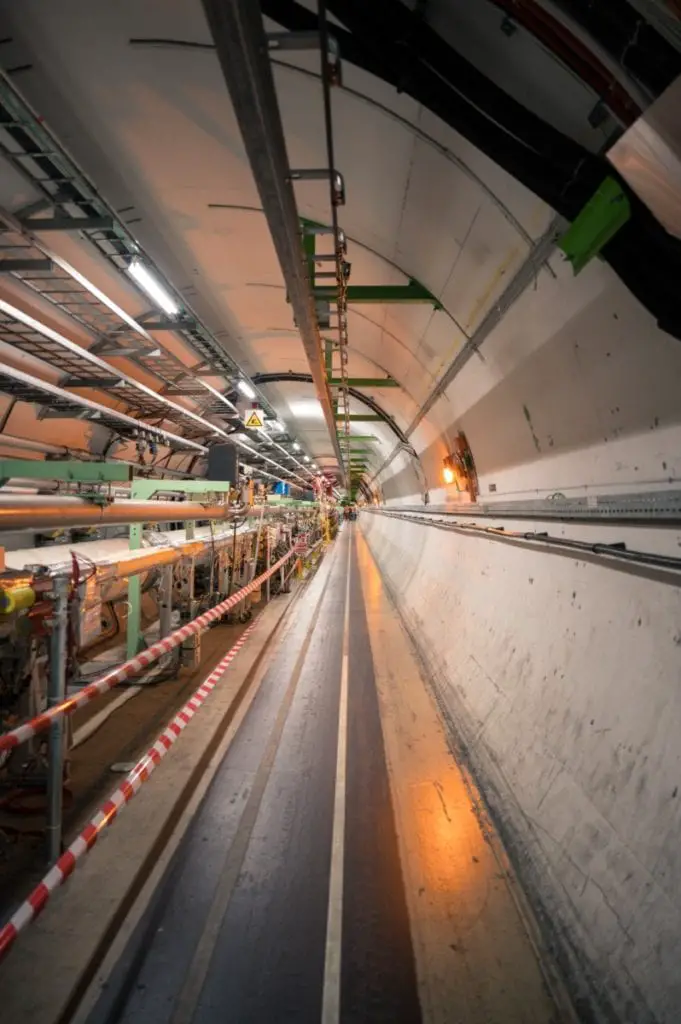To most of us, the 5th dimension is both a familiar but foreign concept. It might have popped up in your favorite sci-fi film or shuffled into your recommended list on YouTube, but you just can’t remember what it’s about. Well, that makes both of us.
I decided to find out.
The 5th dimension, according to the Kaluza-Klein theory is a concept that unifies two of the four fundamental forces of nature in a 5th dimension to explain how light (electromagnetism) interacts with gravity.
Although the Kaluza-Klein theory was later deemed to be inaccurate, it served as a good starting point for the development of string theory, which was only viable with the existence of 10 or more dimensions for its mathematical consistency. Simple deviations were enough to explain the existence of different particles and forces in the universe.
Understanding the 5th Dimension from the Basics
Based on conventional understanding, the first three dimensions give any object in the universe its length, width, and height, which can also be understood as its x, y, and z-axis.

Aside from the three spatial dimensions that make up space, Einstein’s General Theory of Relativity also suggested a 4th dimension, where space and time were interwoven into a single continuum known as spacetime. This four-dimensional manifold not only explained why simultaneous events become relative based on the observer’s state of motion, but it also established gravity to be the result of a distortion in the spacetime continuum as a result of a massive object (e.g. Earth).
The 5th dimension came into play when physicist began looking for a unifying theory to connect all known fundamental forces of the universe: strong and weak nuclear force, electromagnetism, and gravity.
The first of these theories were developed independently by the German mathematician Theodor Kaluza and Swedish physicist Oskar Klein, to become what was later known as the Kaluza-Klein Theory.
In 1919, Kaluza sent his hypothesis to Einstein, where he presented an extension of general relativity in 5 dimensions (four spatial, one temporal). This theory proposed electromagnetism to be the result of warping in the fifth unseen dimension, which was similar to the type of distortion caused by super-massive objects in the spacetime (4D) continuum that resulted in gravity.
Based on this understanding, Kaluza believed he could unify the two forces. With visible light being a part of the electromagnetic spectrum, Kaluza envisioned light to occur mostly in the fifth dimension, and what we see is just the rippling effect of the disturbance in this higher dimension.
If that was hard to wrap your head around, let me give you an example. Imagine that you are an oblivious tuna that has lived your entire life in the ocean, and you know nothing about life beyond the ocean surface. In fact, you probably didn’t even know that a surface existed until you saw the shadows of the ripples caused by a crashing wave or a rain droplet. Similarly, we as humans cannot perceive this 5th dimension until a disturbance is caused to the surface, with the ripples being light instead of shadows.
But here comes another question, why can’t we see this fifth dimension?
What does the 5th Dimension look like?
Unfortunately, no one has seen or knows what the fifth dimension looks like, but there are explanations.
In 1926, Oskar Klein gave a quantum interpretation to Kaluza’s five-dimension theory where he introduced the concept of “compactification”. Klein hypothesized that the fifth dimension is actually rolled up in a tiny, compact loop on the order of 10^-33 centimeters, which is much smaller than an atom and invisible to the human eye.
Although difficult to observe, the Large Hadron Collider provides us an opportunity to record indirect evidence of the fifth dimension’s existence, with one of its missions being to test the possibility of unseen extra dimensions.
The collision of subatomic particles within the collider is theorized to produce new particles, which include the hypothetical quantum of gravity – Graviton, which is also known as the elementary particle that mediates the force of gravity. This is an important concept to recognize as all other fundamental forces rely on the exchange of specialized force-carrying particles. With electromagnetism, the strong and weak nuclear force transmitted by photons, gluons, and W & Z bosons respectively.

With the theorized existence of graviton, the Large Hadron Collider is understandably used to search for evidence of graviton. This also acts as indirect evidence for the fifth dimension, as gravitons could be leaking from the fourth dimension into a five-dimensional bulk. This scenario that’s known as the “braneworld” imagines our four-dimensional spacetime continuum as a membrane, with the enclosed recognized as “bulk” that could contain more than one extra dimension.
Although theoretical, this concept also provides an explanation for the relative “weakness” of gravity when compared to the other fundamental forces.
I know, you would actually think gravity, the force that keeps Earth on orbit around the Sun is quite strong. But when you really think about it, a simple magnet can easily overwhelm the pull of the Earth on a paperclip. Crazy right?
Now, when we piece everything together, this comparative weakness of gravity can easily be explained if all other particles cling to one side of the membrane, with the exception of gravitons who have the ability to traverse the “bulk” and spend much less time interacting with our spacetime continuum.
String Theory and the 5th Dimension
Though the approach by Kaluza and Klein is now known to be inaccurate, their theories contributed significantly as the basis of modern string theory.
Based on conventional understanding, Quarks are a type of elementary particle that makes up the neutrons and protons of the atom nuclei, and it cannot be split into anything smaller. Or at least, until string theory came along.
Under the theoretical framework of string theory, tiny string-like filaments of energy can be found when quarks are magnified further, and its vibrational state determines the properties of the “particles”. Quarks, electrons, photons, etc. are all strings vibrating in their own pattern.
Of course, these strings are only seen as particles if we were to observe them at anything other than the string scale. Even Earth is just a tiny dot when viewed from Saturn.
It’s important to understand that within the standard model of particle physics, the existence of gravity has stumped the world for decades in trying to explain how all forces within the universe interact.
The Kaluza-Klein Theory provided the basis for unifying electromagnetism and gravity in the 5th dimension, whereas String theory, however hypothetical, linked together all the fundamental forces of nature by explaining the existence of gravitons as just another string vibrating in its own pattern. But in order to be mathematically consistent, the various string theories that have been developed including superstring theory and M-theory can only become viable in ten dimensions or more.
